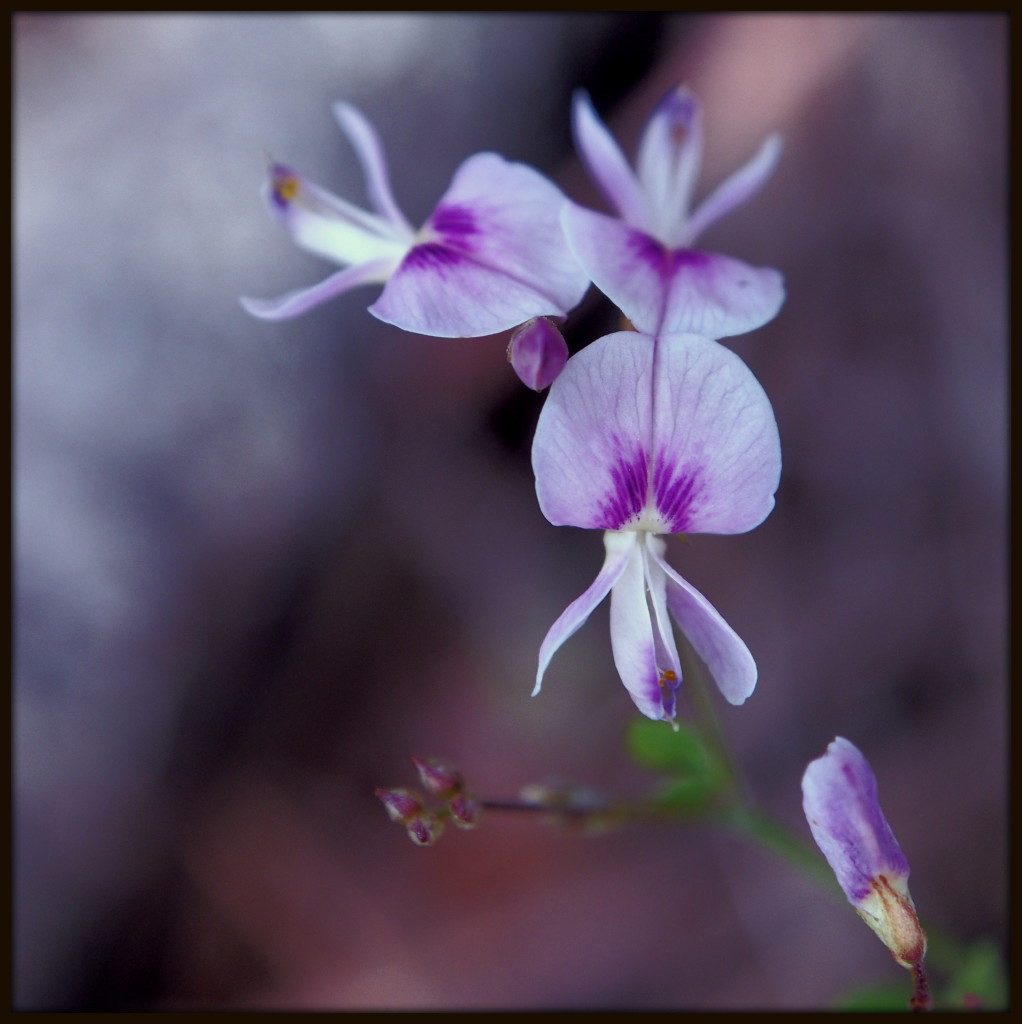On my walk this afternoon, I saw a long-legged fly gathering nectar from just-opening blossoms of American Burnweed. Its body was an iridescent green and gold — a piece of flying jewelry.
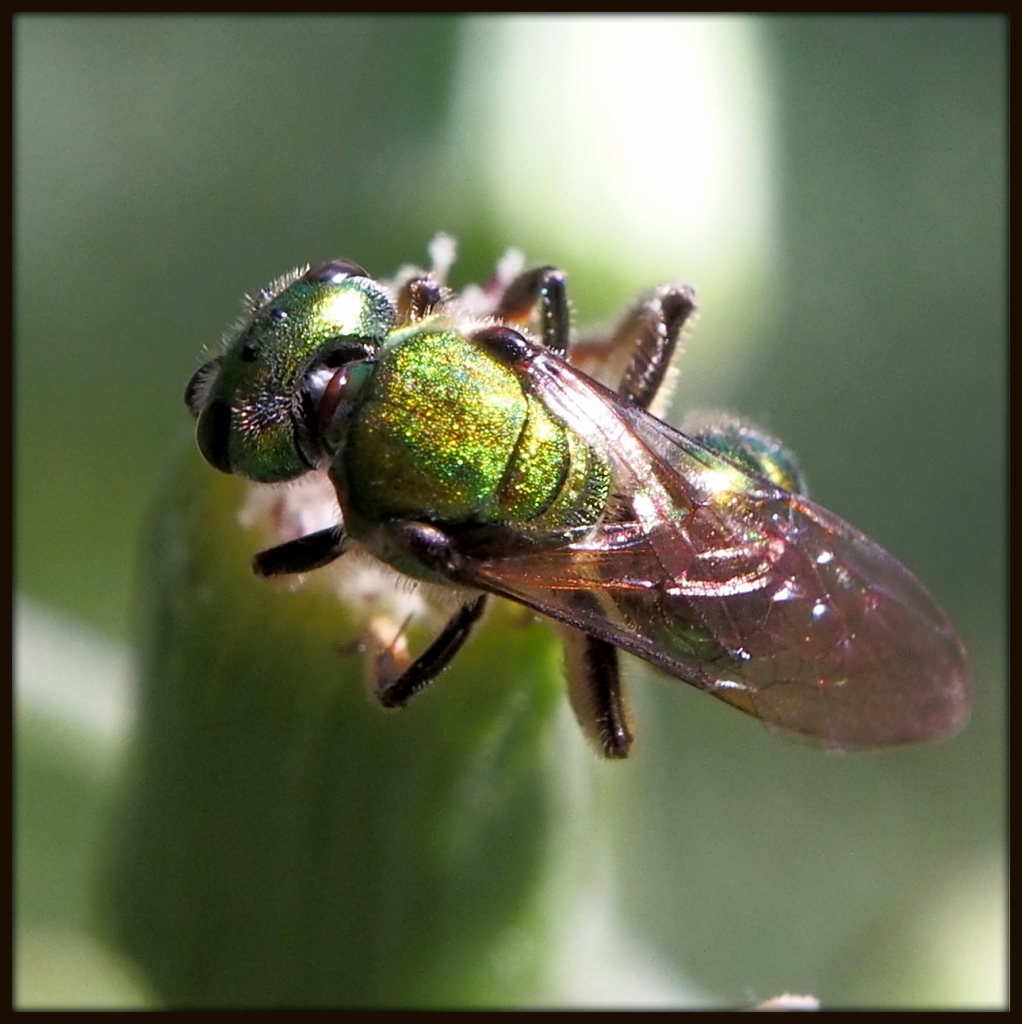

On my walk this afternoon, I saw a long-legged fly gathering nectar from just-opening blossoms of American Burnweed. Its body was an iridescent green and gold — a piece of flying jewelry.


Back on June 29th (Day 210), I photographed the nymphal form of the Leaf-footed Bug (Acanthocephala terminalis). Today, I am delighted to announce, I encountered the same insect, only this time in its adult form, perched motionless on a leaf of American Dogwood (Cornus florida). Despite its imposing size and form, the Leaf-footed bug is a placid herbivore, content to sip vegetable juices.


On this afternoon’s walk, I encountered quite an array of invertebrates — insects and spiders — as I wandered from plant to plant along the edge of Piney Woods Church Road. Rather than highlight just one, I am offering this post as an exploration of the rich diversity of a modest country lane in the Georgia Piedmont. I saw, and photographed, even more than these on my wandering, in fact. Most of the critters below are new to my blog, except for the Rough Stink Bug, who easily makes up in charisma what it lacks in novelty.
The first critter, hiding on the underside of a leaf while dining on an aphid (I think) was a tiny jumping spider, only about a quarter-inch across. I am fairly confident it was a female Bronze Jumper (Eris militaris). I love this image with all of those eyes gazing out furtively from her hiding spot.

Across the road, on the unopened blossom of American Burnweed (Erechtites hieraciifolia), was a half-inch crab spider, most likely a female Goldenrod Crab Spider (Misumena vatia), frozen with front legs outstretched, waiting for a would-be pollinator or nectar thief to wander by.

Down the road a short way, I saw a Rough Stink Bug (Brochymena quadripustulata) repeatedly tapping its proboscis against an oak leaf. A red orb near its eye is probably a mite of some kind.

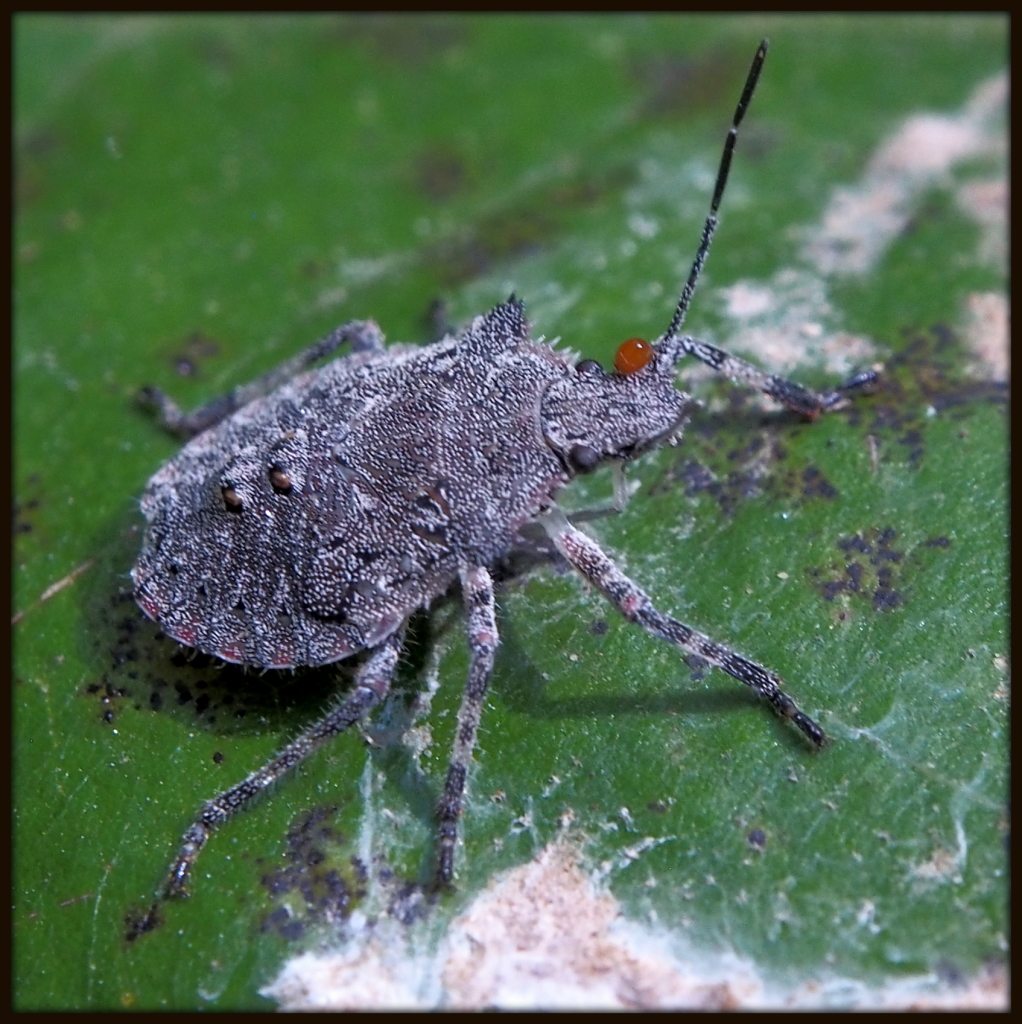

I continued until I arrived at the Mountain Mint, which amazingly enough still bore a few blossoms. Lurking nearby was a Carolina Mantid (Stagmomantis carolina), hanging upside-down and waiting for prey to amble near. With all these spiders and mantids out there, it must be rough to be an herbivorous insect….
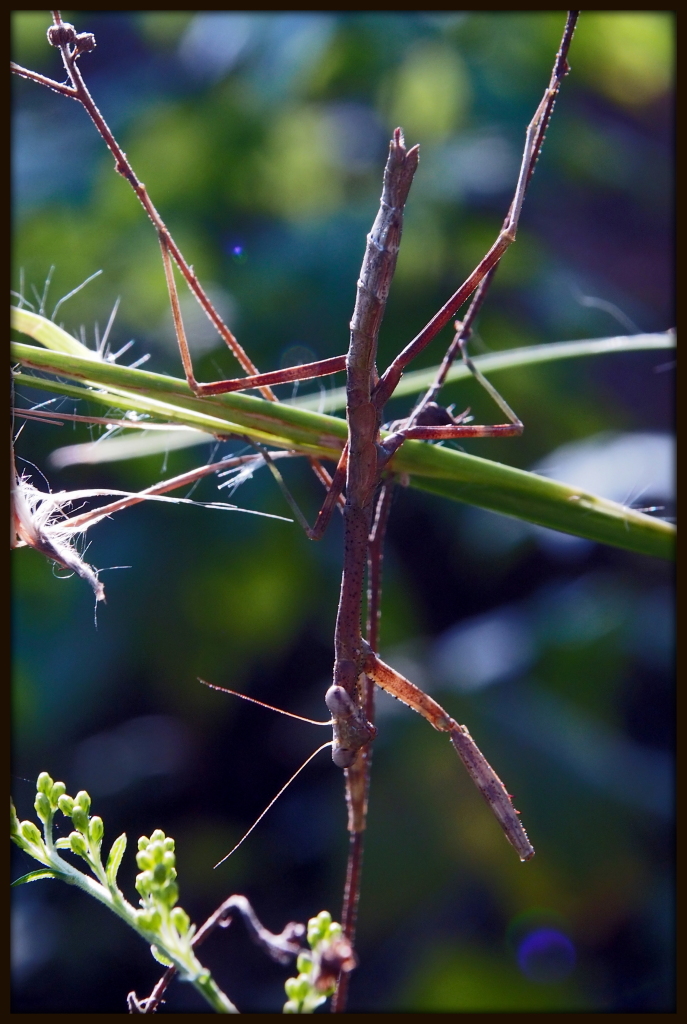

Close by, on the Mountain Mint blossoms, an inch-long wasp was feeding enthusiastically on nectar. She (most likely a female) had an abdomen with distinctive yellow and red markings. I am fairly certain she was a Digger Wasp (Scolia dubia), a solitary wasp that paralyzes June beetle grubs and lays eggs on them. The larvae feed on the grub, but adults dine on nectar instead. Unless disturbed, Digger Wasps will not sting humans.
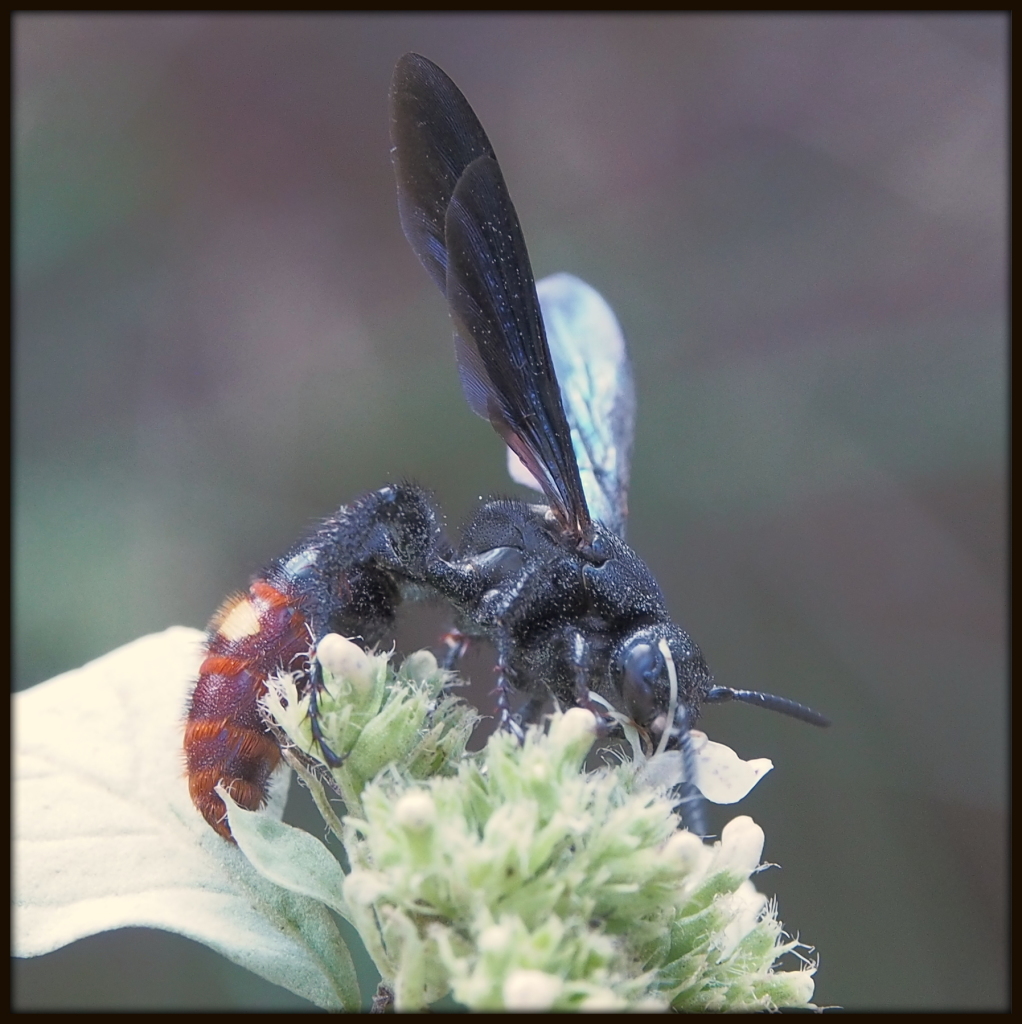
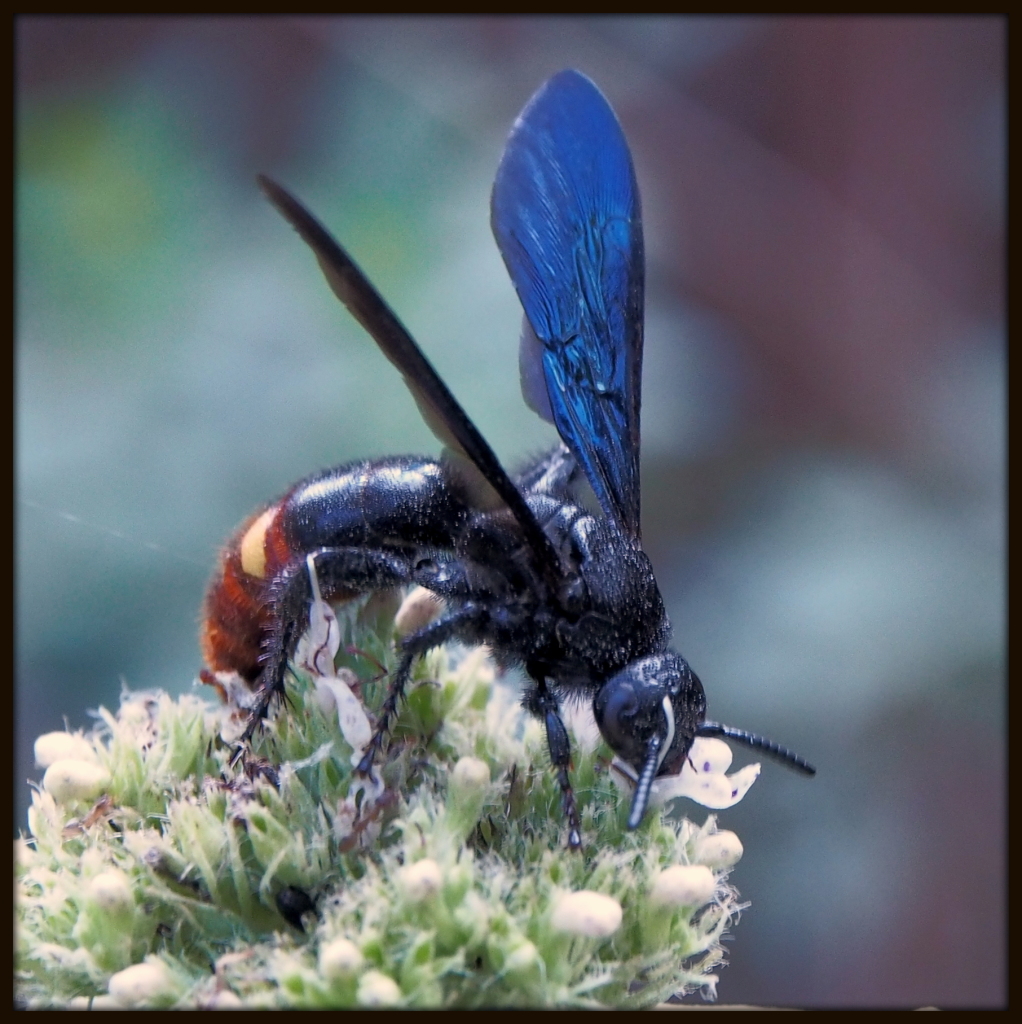

Today marks at once both the 250th day of the Piney Woods Church Project and, by sheer happenstance, the 500th post on the Commonplace Nature blog. I confess that I felt a great burden as I set off on a morning ramble down the road today; what could I possibly find that would justify the status of 250th day and 500th post? What new image could even attempt to capture the journey I have taken this year, the wonders I have encountered on a seemingly nondescript bit of gravel track? I did see (and photograph) an insect I had not previously encountered, which will become post 501. But it was only when I returned to the intersection with Rico Rd. that I at last saw my muse: a pair of broken eyeglasses, attached to a stop sign post. I noticed them for the first time; ironically, in talking later with my wife, I learned that they had been hanging there for a couple of months. Walking the dogs one day, she had found them in the dirt, scuffed up and one lens missing, and had put them there for the owner, perhaps, to find. She hadn’t noticed them since, and neither had I. Until now.
The road has become my eyeglasses. I put them on when I reach the intersection with Rico Road, wear them gladly as I make my way to Hutcheson Ferry Road, and take them off again as I turn back at last onto Rico Road for the short stroll home. In-between, I encounter seemingly endless visions and wonders through their gravel frames. It is not all bouncing bunnies and frolicking calves — though I have seen those, too. There is also predation and death. There are moments of stillness, contained within drops of water or suspended from spiders’ threads. There are encounters with the unknown — insects unlike anything I have seen before, blossoms of flowers I have hurried home to identify in my field guides. The Sun illuminates leaves, which blaze in brilliant shades of yellow-green and orange-red. There is still a sense of wonder about what might await me around the next bend.
One-hundred-fifteen days to go. I begin to plan my next journey, one that will embrace all of Chattahoochee Hills. And, meanwhile, I continue my apprenticeship as a Dirt Road Pilgrim.
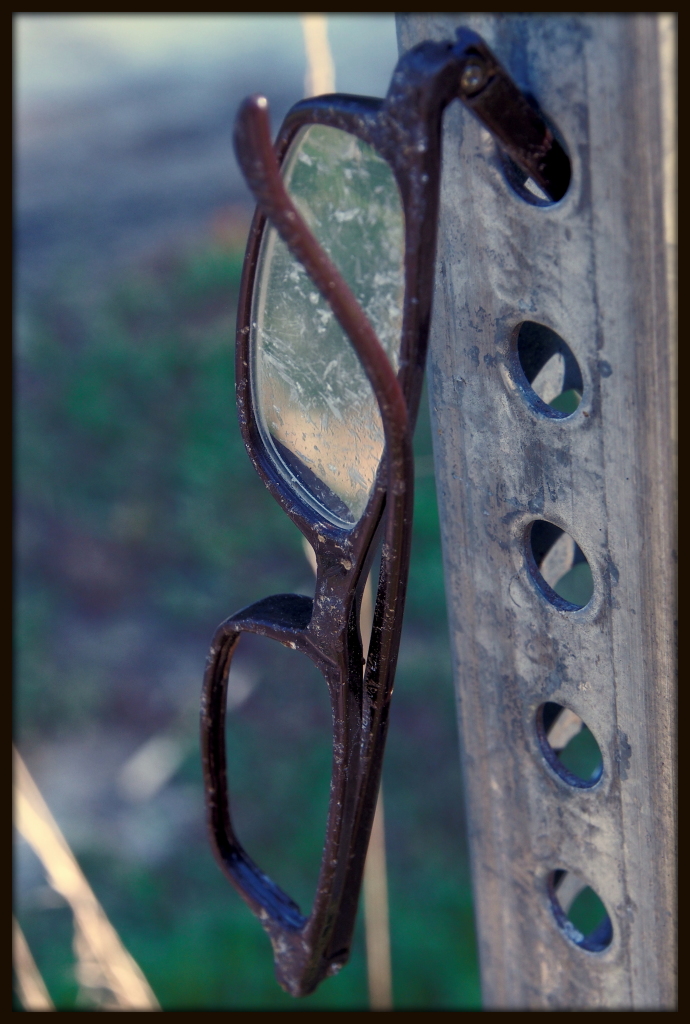
On Day 249, for Blog Post #499, here is this evening’s photograph of a white calf in a pasture along Piney Woods Church Road. He watched me for a minute or so as I beckoned him to approach. His caution eventually overrode his curiosity, and he hurried off to join the rest of his herd grading placidly beside the road.
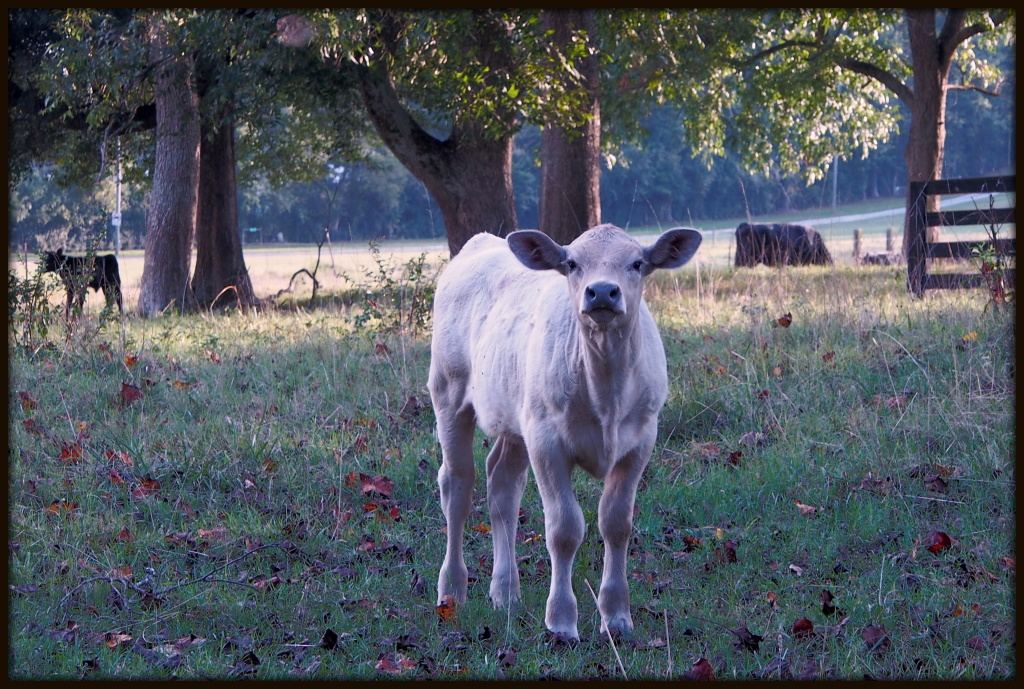
It is muscadine season along Piney Woods Church Road, but the grapes are fairly few and mostly out of reach. I suspect that most of them get snatched up by the white-tailed deer, like the pears on my tree usually do — but that is another story.
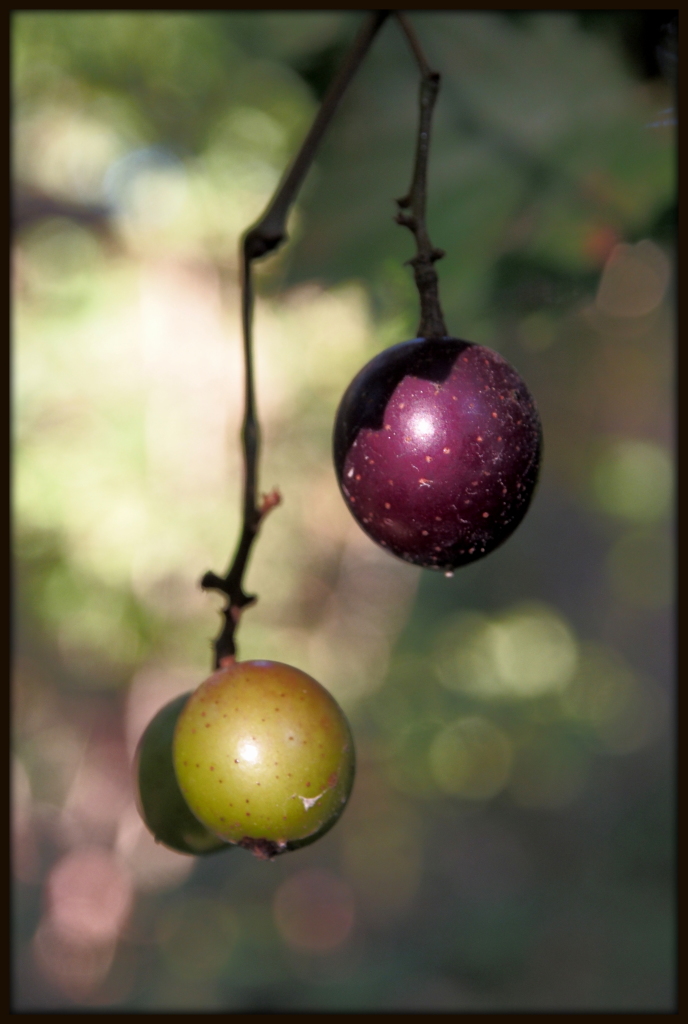
There were still enough clouds in the sky this evening for some lovely sunset images along Piney Woods Church Road. This one was taken from a grassy field at the Hutcheson Ferry Road end of Rico Road, looking back toward some cedars growing along a fence line.

This evening I set out for Piney Woods Church Road a scant hour before sunset. The air was a bit cooler, though still rather warm and muggy. About halfway down the road, beside what was once a mule barn, I noticed a lean and wary Eastern Cottontail Rabbit (Sylvilagus floridanus). It stood motionless in the grass, probably hoping to escape unnoticed. It was completely alert, ears raised — though not quite “all ears”, as it apparently lost a couple of pieces of one of them in some past mishap. I was able to approach to within eight feet or so of this rabbit before it turned tail and hopped a short distance away. We parted company, and I continued on my walk.
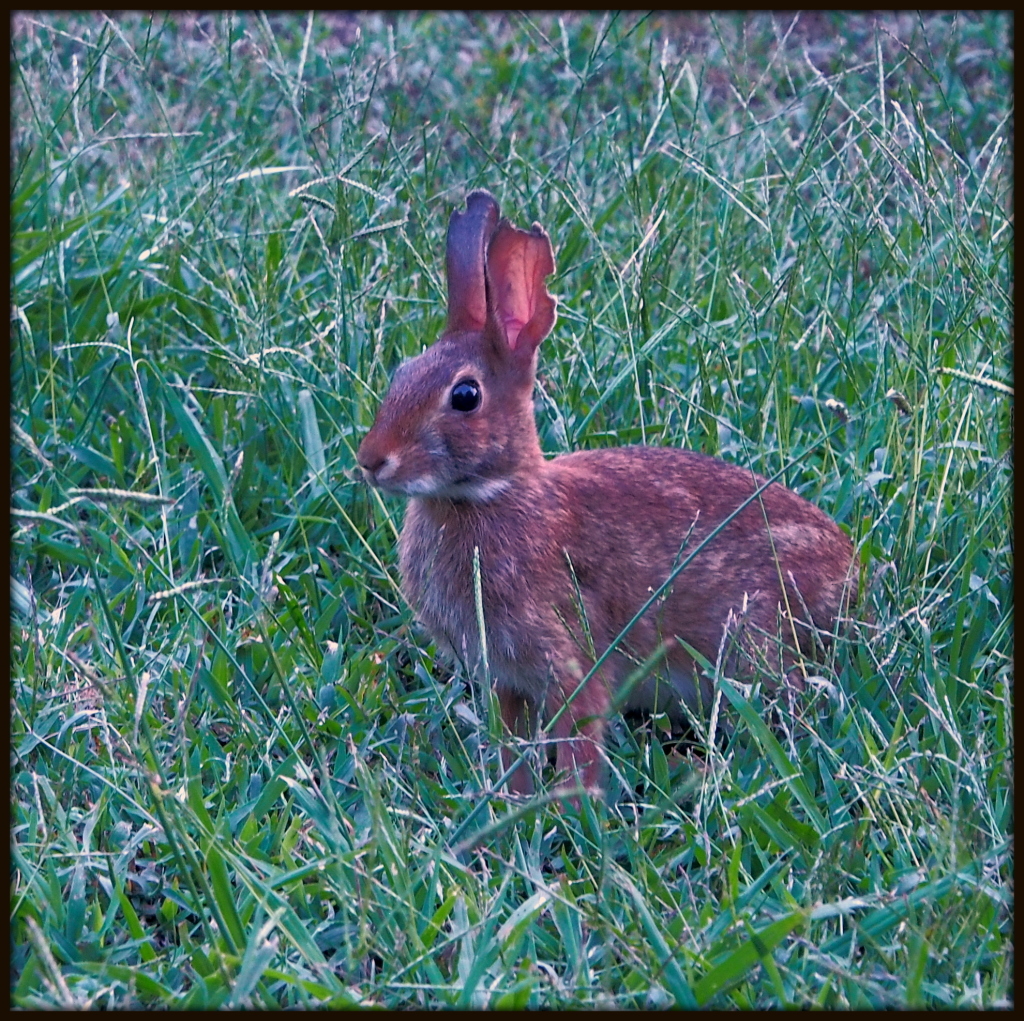
I know, yet another photograph of the Yellow Garden Spider (Argiope aurantia)…. I was on Facebook yesterday, and saw an entire discussion thread loaded with everyone’s photos of this enormous spider. I can understand why, of course — this spider is easily among the most dramatic and photogenic of our orb-weavers. Practically no other spider in the Southeast approaches it in size, and its vivid yellow coloration is quite conspicuous against the greens and browns of a forest edge. Then there is its huge web, with its carefully-stitched “zipper” that helps to prevent wayward birds from crashing into it.
For a slightly different take on Argiope aurantia, I am including photographs of a moderately-sized female I saw along Piney Woods Church Road today, taken both from both the front and the back. Her underside is not quite as visually stunning, but still imposing enough. And this particular one was only an inch and a half across.
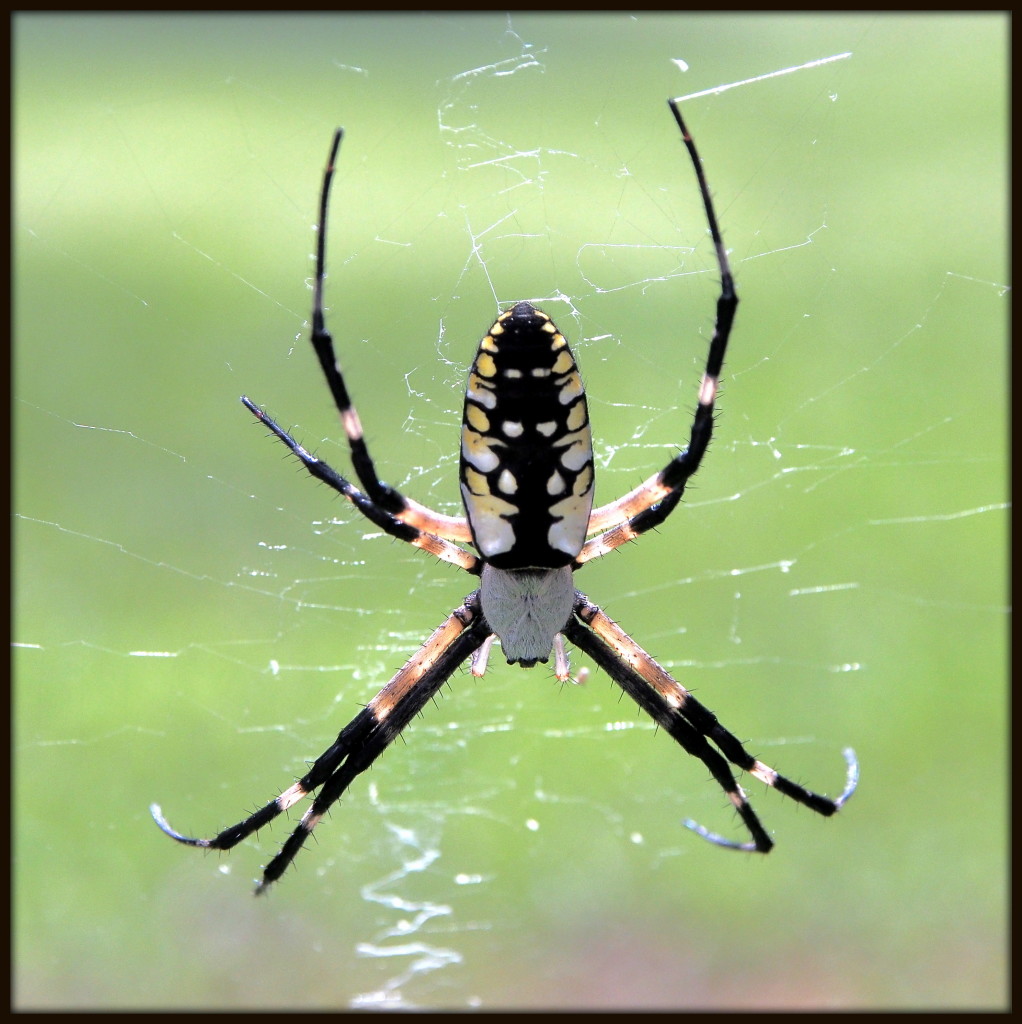

This time of year, there are precious few flowers coming into bloom along Piney Woods Church Road. I was elated to encounter diminutive pea-like blossoms in a small gully beside a neighbor’s driveway during my walk earlier this afternoon. I am fairly confident that the quarter-inch blooms belong to Creeping Lespedeza, also known as Smooth Creeping Bush Clover (Lespedeza repens). Like all members of the Pea Family (Fabaceae), this perennial, common to open woods and roadsides throughout the Eastern United States, enhances soil quality by fixing nitrogen. Plus, it adds lovely tiny splashes of pinkish-purple to the roadside that I can enjoy on my daily walks during the hot and humid days of early September in Georgia.
